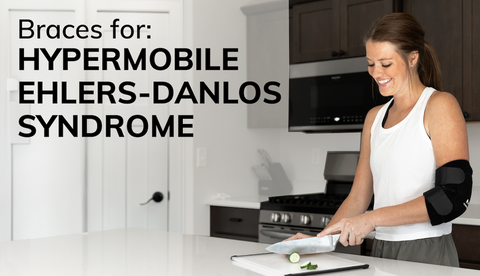Spondylolisthesis Symptoms & Signs that it's Causing your Back Pain
Spondylolisthesis occurs when one of the bones in your vertebra slides forward or backward over the bone next to it. This typically occurs in the fifth or fourth vertebra (L4 or L5) in your lower back, making lumbar spondylolisthesis the most common. There are five different grades of spondylolisthesis, each depending on the degree that your vertebra has slipped forward or backward. Grade I being least severe, and grade V being the worst case of spondylolisthesis.
Spondylolisthesis is easily confused with the condition spondylolysis, which is no surprise because their names are very similar. Spondylolysis can be seen as the beginning of spondylolisthesis. This condition occurs when you have stress fractures of the pars interarticularis (the small bone that joins with the facet joint at the bottom of your vertebra), which can cause a separation of this bone. When this separation worsens or begins to slip, this is the starting stage of spondylolisthesis.

These conditions are more common than you think; most instances of spondylolysis or spondylolisthesis are not accompanied by symptoms or the symptoms do not appear until much later in life. For some individuals, you may not even experience any symptoms at all.
What Are Common Signs & Symptoms of Spondylolisthesis?
The most common spondylolisthesis and spondylolysis symptom includes pain that stretches across the low back and can be compared to what you might experience with a strain to the muscles of this area. Other possible isthmic spondylolisthesis symptoms include spasms in the lower, middle, or upper back region or tightness of the hamstrings. This, in turn, can cause you to change your posture and/or gait. Other symptoms of spondylolisthesis can also include:- Numbness or weakness in your legs
- Having trouble walking
- Developing spinal stenosis (a narrowing of the spaces of the spinal canal).
- Poor posture, hunching, abnormal curves in your spine
- Nerve compression or signs of sciatica - tingling, numbness or weakness in the legs, hip, foot or radiating pain in these areas.
- Loss of control or problems with your bladder or bowel movements (severe cases)
What Causes Spondylolisthesis & Spondylolysis?

- Isthmic: Result of stress fractures that weaken the vertebra of the spine so much that your bones in your spine tend to slip out of position.
- Degenerative: This is the most common type of spondylolisthesis. It is a result of the natural aging process in which your joints degenerate or become weak, allowing your vertebrae to slip forward or backward.
- Traumatic: Result of trauma or injury to your spine in which your joints allow your vertebra to slip forward or backward.
- Pathologic: Result of a disease such as infection, tumor, cancer, etc.
- Dysplastic (congenital): Refers to a malformation in the facet joints that is present from birth, this can compromise the function of the joints.











